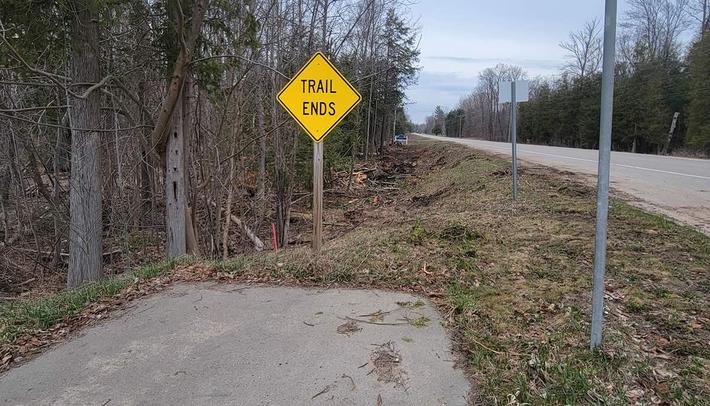The Crisis of Crises
Spectator
By Stephen Tuttle | June 24, 2023
We don’t just have problems to be solved these days—we have crises. There’s the mental health crisis, the housing crisis, and the opioid crisis, at a minimum.
Back in 1997, Michigan ordered the closing of all 16 state hospitals, a decision similar to that being made nationally. The idea was two-fold: ending the warehousing of mental health patients and stopping spending on facilities believed to be underutilized. Instead, we were told, those funds could be used for community mental health centers offering a more humane and personal level of care.
But those community centers never came to fruition in a way that actually replaced the state hospitals. Now we have far more people needing and seeking treatment than we have the ability to provide such treatment.
According to the Centers for Disease Control and Prevention (CDC), nearly 42 million Americans sought counseling or treatment for various mental health issues in 2022, an increase of 14 million in the last two decades, and women are twice as likely as men to seek help. But the National Institutes of Health (NIH) reports that nearly 58 million Americans live with mental illness, so there is a large and growing gap between those needing assistance and those seeking it.
And deeply troubling data comes from The Jed Foundation, a nonprofit dedicated to identifying and providing mental health assistance to young people, particularly in the prevention of suicide. They indicate more than 12 percent of our children under 18 experience severe depression, and a stunning 18.8 percent of high school students “seriously considered” suicide in the last year.
And things aren’t getting any better. According to the Kaiser Family Foundation, fully 47 percent of Americans, more than 155 million people, live in areas with a severe shortage of mental health workers. Even those seeking help might not find it anywhere close to where they need it.
We’ve done a better job of compiling statistics than we have providing help. Mental health services are underfunded or completely unavailable, so instead of warehousing mental health patients in large institutions, we now warehouse them in jails, homeless encampments, and cemeteries.
And we have plenty of folks experiencing homelessness these days. The National Alliance to End Homelessness puts the number at more than 528,000, with about three-fourths over the age of 25. More disturbing is that 18 percent were children under the age of 18. Contrary to myth, most of these people are not shiftless bums; fully 43 percent of the unhoused population are employed full or part time but have experienced some type of financial dislocation that has put them on the street.
(It should be noted that homelessness is likely seriously under-reported. People experiencing homelessness are frequently on the move, and the small cohort who have chosen the “freedom” of homelessness are adept at avoiding census takers and social workers.)
At the same time, it’s not as if we have housing available to those seeking it, and what housing is available is often too expensive for those finding themselves on the street. Realtor.com says we are about 6.5 million single-family homes short, and the National Multifamily Housing Council says we will be 4.3 million apartments short by 2035, only exacerbating the housing crisis.
“Affordable” housing is a different issue with different definitions. For homeowners, one standard is the ability to pay the mortgage with sufficient funds remaining to pay for other necessities like medicine, health insurance, transportation, food, etc. For renters, the standard has become rent payments that are no more than 30 percent of net income.
(But “affordable” is subjective; in Traverse City, high-end condos are often sold before construction is complete, so they are certainly affordable for someone. “Low cost” would be a better descriptor of what many people seek.)
Meanwhile, we are killing ourselves at record-breaking rates with drug overdoses, frequently involving fentanyl manufactured in China and imported in quantity at ports of entry, not carried by someone crossing illegally.
According to the NIH, there were a stunning 106,000 drug overdose deaths in the US in 2022, far more than anywhere else on the planet. In fact, per the CDC, we had more drug overdose deaths than murders (26,000) and suicides (48,000) combined.
As I said, we’re good at compiling the statistics on these issues but less good at actually solving them. We’ve extracted a few billion dollars from opioid manufacturers we say we’ll use for education and various addiction services. No such financial target exists to provide needed funding to help ever more troubled people and shelter for ever more people experiencing homelessness.
We’ve identified and even quantified these crises but are a very long way from realistically addressing or funding them in ways that would help. And that’s a real crisis.
Trending

Walking in an Artsy Wonderland
Michigan Legacy Art Park is hosting the “Raindrops” artwork created by Dewey Blocksma and Patricia Innis at th... Read More >>
Seven Takeaways from Local Real Estate Agents for the Spring/Summer Market
The last few years in local real estate have been akin to what one local agent described as the “wild west,” w... Read More >>
Blazing the Boyne City to Charlevoix Trail
We’re getting ever closer to an interconnected northern Michigan thanks to ongoing work on the Boyne City to Charlev... Read More >>


